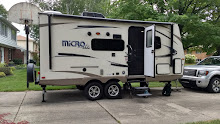 |
(It won't let me move this to the bottom, where it should be.)
This is the Mark Twain impersonator we enjoyed after dinner. |
Thu. Apr. 6: For the first time on the river cruise, the
boat stayed for a 9 hour day when we docked at Natchez. The area has been
inhabited since around the eighth century, when the Mississippian culture built
mounds there. In the 17th and 18th centuries the Natchez
Indians occupied the lands and were visited by Hernando de Soto and his men as
they crossed the river nearby. Bienville built a crude fortification called
Fort Rosalie there in 1716 and the French clashed with, then killed or
enslaved, the Natchez Indians. Here there is a terminus of the Natchez Trace,
the 444 mile pathway that flatboatmen followed to return home after floating
their goods down the Ohio and Mississippi for further transport to New Orleans.
Cotton made Natchez wealthy and there are many restored plantation homes to
visit. The steamboat docked at Natchez-Under-The–Hill, the notorious rough area
at the bottom of the bluff. Once a noisy, thriving area five streets wide, the
stretch along the river is now reduced to just Silver Street. After breakfast our
bus took our group to Longwood Plantation, which was an exotic departure from
typical homes of the period, octagonal and in the Oriental Revival style. Most
interestingly, it was begun in 1860 but interrupted by the Civil War and the
owner’s death, so only nine of its 32 rooms, all in the basement, were
finished. It was eerie to wander the second floor and try to imagine how
magnificent it would have been when finished.
 |
| Longwood Plantation House |
 |
The finished rooms in the basement are partially lit by
"sky lights" in the ceiling that bring light from above. |
 |
Highly unusual floor plan for the second floor (third level)
because of the octagonal shape of the home. |
 |
Ann is on the left, looking down into one of the "sky lights" that send
ambient light to the basement rooms. The brickwork and a rudimentary
stairway (on the left) are all that were completed above the basement level. |
 |
Bedrooms would have been added on the third (and fourth?) levels,
with a towering dome letting in light far above. |
 |
| A finished porch on the second level |
After our visit there, the bus
went back into town and dropped us at Stanton Hall, built in 1858 and the quintessence
of elegant Greek Revival splendor. Carrera marble, mahogany doors, massive
Corinthian columns, and delicate cast iron railings adorn the façade of this
mansion that covers a city block and is now run by one of two rival gardening
clubs who have never reconciled after their split back in the 1930s! We had
enough time there that Marv and I walked around the old neighborhood and
admired the buildings, many of which are marked with historical plaques out
front.
 |
Stanton Hall |
 |
| Outside Stanton Hall |
 |
The back third of the Parlor could be closed off by huge folding
doors so the Women could enjoy Music while the Men had whiskey
and cigars in the front area. The Parlor, opened, ran the
entire length of one side of the mansion. |
 |
The upstairs hallway is wide and welcoming. Ann chats
with a costumed guide about the home. |
 |
If you can enlarge this sign, it tells the history of
Stanton Hall and two other nearby homes. |
 |
The Wilkins Town House, built in 1835, is one of the oldest
buildings remaining in Natchez and serves now as a B&B. |
 |
This one was for sale! Keeping up the old tile
roof would be just one of the challenges. |
 |
| We heard about this historic race from our Steam Boat captain back in New Orleans. |
 |
| A nice view of the American Queen moored at Natchez. |
We returned to the boat for lunch and then headed out again in the
afternoon. There was a quick stop at a Presbyterian Church to see the
magnificent stained glass windows, two of which were made by Tiffany Company.
Then
we traveled on to Antioch Missionary Baptist Church, where some members of the Natchez
Gospel Choir sang some songs for us before inviting us up to sing along.
Shelby, Marv and I went up to the choir loft to sing, then Chuck joined us when
we lined up on the floor in front of the sacristy to do some movement with a
song. It was a rollicking good time!
 |
Marv and Peggy, front row left, and Shelby, second row middle,
make a joyful noise unto the Lord. |
 |
| Shelby and Chuck rockin' with the Gospel Choir. |
There was a calliope concert as we left
Natchez at 5:00. After dinner we thoroughly enjoyed “An Evening with Mark Twain”
by impersonator Lewis Hankins.
 |
Because we had been busy with Road Scholar activities, we never had a chance to a regularly
scheduled tour of the Pilot's House. Chuck made arrangements for the 6 of us to have our
own private tour before we left Natchez. |
 |
| The Pilot on duty (one of two on board) looked about 16 years old! |
 |
| Marv, Mary, Shelby, Chuck (sitting in the Pilot's Chair), Ann, and Peggy |
 |
| The Calliope playing |
 |
Two Balloon Animals from our very own Balloon Lady, who was a
fellow cruiser, commune with John Hesse's Tiger.
|
 |
The one dessert I couldn't pass up--Mississippi Mud Pie.
|

































































